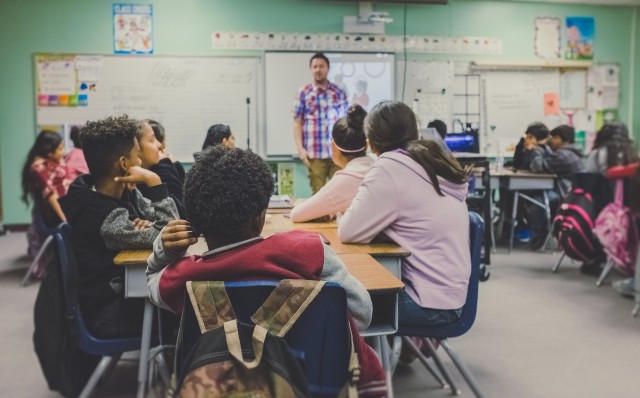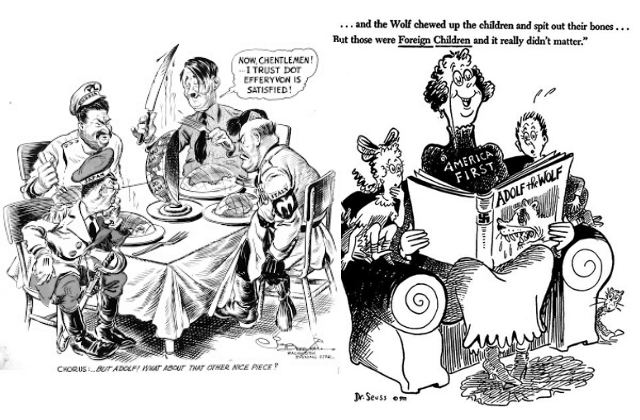
There are some myths in education that persist about social studies and history classes. The first is that teaching history is easy. Then people think it’s boring because it’s all names and dates. Finally, people think the only effective way to teach social studies is to lecture at students and quiz them.
It’s not just the students who think this. I can’t tell you how many teachers I’ve heard dismiss social studies as lesser or “the easy subject” to teach. Unfortunately, many social studies teachers themselves fall into some of this flawed thinking.
There’s a common idea in social studies pedagogy that you can’t use the same proven methods to teach history as you do other subjects. But I’m here to tell you that’s not the case at all. One example is the Gradual Release of Responsibility model, which is commonly used in math and English classes.
But before I explain how to use this strategy in your history class, we need to understand what teaching social studies is really all about.
The Purpose of Social Studies
Social studies includes subjects like history, geography, sociology, government, and in some places, economics. It is the study of society across time and space. It’s the study of people, and people are interesting.
History is not all about names, dates, and places. Do you remember the exact time and date of every important event in your life? Probably not. History is a story, and I encourage you to present it as such. Humanize the people you are teaching.
When you teach the American Revolution and the Declaration of Independence, do your students imagine stuffy old men? Well, Thomas Jefferson was only 33 when he wrote the Declaration. He was also a complete “player” when it came to the opposite sex. John Adams was a completely obnoxious person that everyone hated. The Marquis de Lafayette, who brought French troops to turn the tide of the war, was a mere 18 years old in 1776. He was just a kid!
But the other purpose of teaching social studies is teaching critical thinking skills. The College Board calls them historical thinking skills. In Texas, our standards call them process skills. These skills include things like identifying bias in documents, causation, comparison, contextualization, reading charts and graphs, synthesis of facts, and contextualization.

Why are process skills important? Well, a quick scroll through your Facebook feed or the comment section of your local news site will reveal that they aren’t skills most people have.
- What is comparable between COVID-19 and the 1918 Influenza and what is different?
- Where does this article come from, and do they have an agenda that is biased?
- How do I put all of this information about political candidates together to figure out who best represents my interests?
- Does the state of the economy look like something in the past? How can we avoid making huge mistakes? What should I do to prepare for a recession?
These are just a few examples of how skills taught in social studies are applied in real-life situations. This is why social studies is important.
What Is the Gradual Release of Responsibility?
The Gradual Release of Responsibility model has been around since 1983. It’s exactly what it sounds like: releasing the responsibility of the classwork from the teacher to the students gradually. It was formulated by P. David Pearson and Margaret C. Gallagher and was originally applied to teaching reading comprehension.
The Gradual Release model is now often used in math classes. It includes four stages of teaching: I do, we do, you do together, you do. In order to be effective, all four stages must be present.
Let’s look at an example of a lesson using this technique.
- The teacher models how to divide fractions to the entire class, being sure to also model their thinking process (I do)
- The teacher then asks for the class to tell her what to do at each step of dividing fractions. The students can call out or be randomly called upon (We do)
- The students work on a few sample problems in pairs or small groups (You do together)
- The students complete problems individually (You do)
Many teachers skip the “we do” or “you do together” stage. But this is crucial for students to explain their learning. Peer learning also helps confused students understand in a different way.
Using Gradual Release in Social Studies
It’s easy to imagine implementing this strategy in the math or English classroom. It’s even possible to imagine it in certain science classes (balancing chemical equations, for example). But how do we apply this in the social studies classroom?
This is where we come back to our historical thinking skills. By teaching these skills with gradual release, we ensure that the students truly understand the skill and are able to apply it to different situations.
Let’s look at the skills of contextualization and analysis by using political cartoons. Here’s what this would look like in the classroom, using public domain cartoons by Jim Berryman and Dr. Seuss.

Teacher: The first thing I want to do is look at the date. November 5, 1940. Now, I know the United States didn’t get involved in World War II until December 8, 1941. This is before. Who do I see in this picture? I see Hitler, the leader of Germany. I also see the leaders of Italy, Japan, and Russia. Hm. I know that Germany betrayed Russia in 1941, so they are allies at this point. That means this is a picture of the Axis powers. Now, they are dividing up the globe like they are going to eat it. But they are only splitting the Eastern Hemisphere. They look angry, and Hitler knows that not everyone is satisfied. I think this is showing that they haven’t been able to attack the United States yet and take over. But they clearly want to. So this political cartoonist is warning us that it’s only a matter of time before the Axis Powers attack.
Teacher: Now, let’s look at one together. What’s the first thing I need to do?
Students: Look at the date!
Teacher: Right! This says October 1st, 1941. Were we in World War II yet?
Students: No.
Teacher: When did we get involved?
Students: December 7th, 1941.
Teacher: Good job. So we aren’t in the war yet. What do you see in the picture?
Students: There’s a mom reading a book to kids. She says “America First.”
Teacher: What does that mean?
Students: That was the policy of the US, putting themselves first and not getting involved in the war.
Teacher: Good. What book is she reading and what does it mean?
Students: Adolf the Wolf. Like Adolf Hitler!
Teacher: Good. And what is the story about?
Students: It says that it doesn’t matter that the wolf is eating children because they’re foreign children.
Teacher: Do you think the cartoonist agrees with that? How do you know?
Students: No, because the kids look scared!
Teacher: So, what is the cartoonist’s opinion about World War II?
Students: That the United States should go to war against Hitler!
At this point, you are ready for the “you do together” stage. Give them another cartoon to practice the same skills and work in groups or pairs. Walk around to help if they get stuck on the context or steps. Once they complete this, the students are ready to analyze a political cartoon on their own.
The first three stages are crucial. The students must learn how to think logically through a skill, and the modeling is how we teach that.
The Gradual Release model can be applied to any skill you teach in social studies. But these aren’t skills that come naturally to many kids. You will likely do this model several times for each skill throughout the school year. Once the students have the skills mastered, they can apply their knowledge of historical or cultural events to their historical thinking strategies.
Final Thoughts
Social studies teachers have a responsibility to create informed critical thinkers. Too often, we overlook the skills and thought processes, instead choosing to teach names, dates, and quick summaries of events.
Methods like the Gradual Release of Responsibility can be applied in the social studies classroom to prepare our students to think critically about the information they are inundated with every day.
How do you teach historical thinking skills? Let me know in the comment section.


